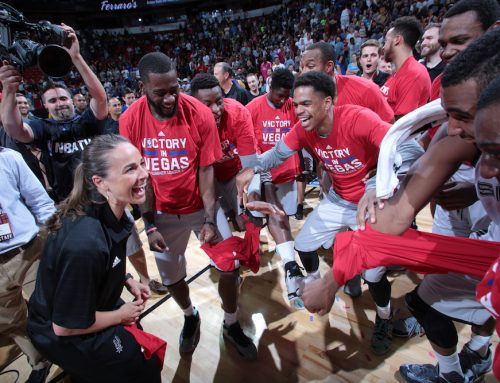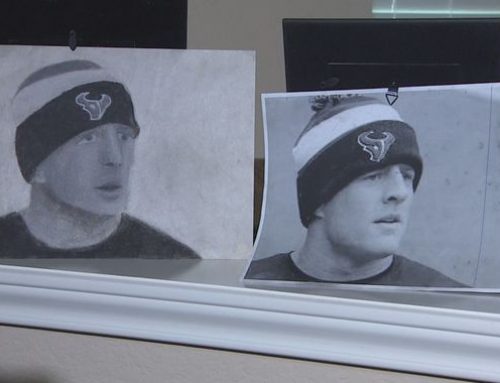via sportsbusinessdaily.com By Eric Fisher, Staff Writer
Why these CES debuts may score with fans, and what may hold them back
The 2013 International Consumer Electronics Show in no small part was about who wasn’t there as much as who was. No Apple, Amazon or Google, as usual. Microsoft this year abdicated its customary, high-profile keynote slot to open the show, leaving the position for Qualcomm. ESPN downshifted its profile after a prominent booth last year. But the show, once again attended by more than 150,000 people from around the world, featured no shortage of prominent announcements, some of which were of particular interest to the sports industry.
4K/Ultra-High Definition
â– What is it? A standard for television resolution four times what is achievable in high-definition.
â– Who showed it? Every major TV manufacturer on the show floor, including Panasonic, Sony, Samsung and LG.
■ How much will it cost? Varies by manufacturer, but some sets are more than $10,000.
■ Who’s excited by it? Anybody who values high-end picture clarity. The visual difference between 4K and “normal†HD is immediately apparent to the naked eye. Such detail is particularly applicable to sports broadcasting.
■ What are the hurdles? Like 3-D and the initial rollout of HD a decade ago, the content pipeline is thin. Retail timetables and pricing are far from established. Anything resembling a mass consumer product is years away. And even first-movers such as ESPN are not enthusiastic about sinking large capital expenditures into producing events in 4K when an even-greater resolution standard is likely on the way.
MLB in-venue mobile connectivity
■ What is it?  T-Mobile will actively work with MLB Advanced Media to boost cellular and Wi-Fi connectivity at ballparks around the country, part of the carrier’s new league sponsorship with baseball.
■ Who showed it? T-Mobile
■ How much will it cost? May vary by market, but generally free.
■ Who’s excited by it? Anybody who’s had trouble making a call, sending a text or loading an app at a ballgame. This is not a new problem, and MLBAM already has been actively engaged on the issue with regard to baseball for more than a year, mapping out the data patterns at each ballpark. T-Mobile’s arrival presents another high-level stakeholder with significant resources to help address the problem. MLBAM expects to have at least a pair of MLB ballparks to serve as initial test cases early this season for an improved venue connectivity plan across baseball.
■ What are the hurdles? Surging mobile data demand. Qualcomm’s Paul Jacobs last week in his CES keynote said global mobile data demand could soon mushroom a thousandfold beyond current levels.
MC10 Skullcap
â– What is it? A skullcap, designed to fit under a helmet for football, hockey and other sports, with trauma sensors built in to measure impacts during play and potentially ward against concussions.
â– Who showed it? MC10 Inc. of Cambridge, Mass. The company has worked with Reebok on the technology. Tennessee Titans quarterback Matt Hasselbeck, an adviser to MC10, was part of the unveiling.
â– How much will it cost? To be determined. Retail availability is projected for the first half of this year.
■Who’s excited by it? Anybody in sports concerned about player safety, which is to say everybody. NFL Commissioner Roger Goodell, appearing separately at CES as part of Verizon’s keynote address, mentioned in-game player health monitoring as a priority. Well beyond just this entry, more natural, wearable electronics at CES with advanced diagnostics for both competitive athletes and fitness enthusiasts was a notable trend.
â– What are the hurdles? Data accuracy, player comfort.
EA Sports MVP Carbon
â– What is it? High-end headphones bearing the EA Sports logo, applicable for gaming, music and movies.
â– Who showed it? Monster, the personal audio company that has struck a partnership with EA Sports to develop the product.
â– How much will it cost? Suggested retail price is $269.95.
■Who’s excited by it? Obviously, EA Sports and Monster. But the deal also represents another example of the fast-emerging cultural intersection among sports, lifestyle and audio technology. Monster co-founder Noel Lee last week went so far as to call that union a “ménage à trois.†Rival brand Soul last week had its own sports-related headphone announcements with New York Jets quarterback Tim Tebow and sprinter Usain Bolt.
â– What are the hurdles? Price could be an issue. EA Sports already garners some fan criticism regarding the $60 price point for sports gaming titles that return each year. The headphone cost is not out of line with similar, high-end audio products, but will be out of reach for some consumers.



